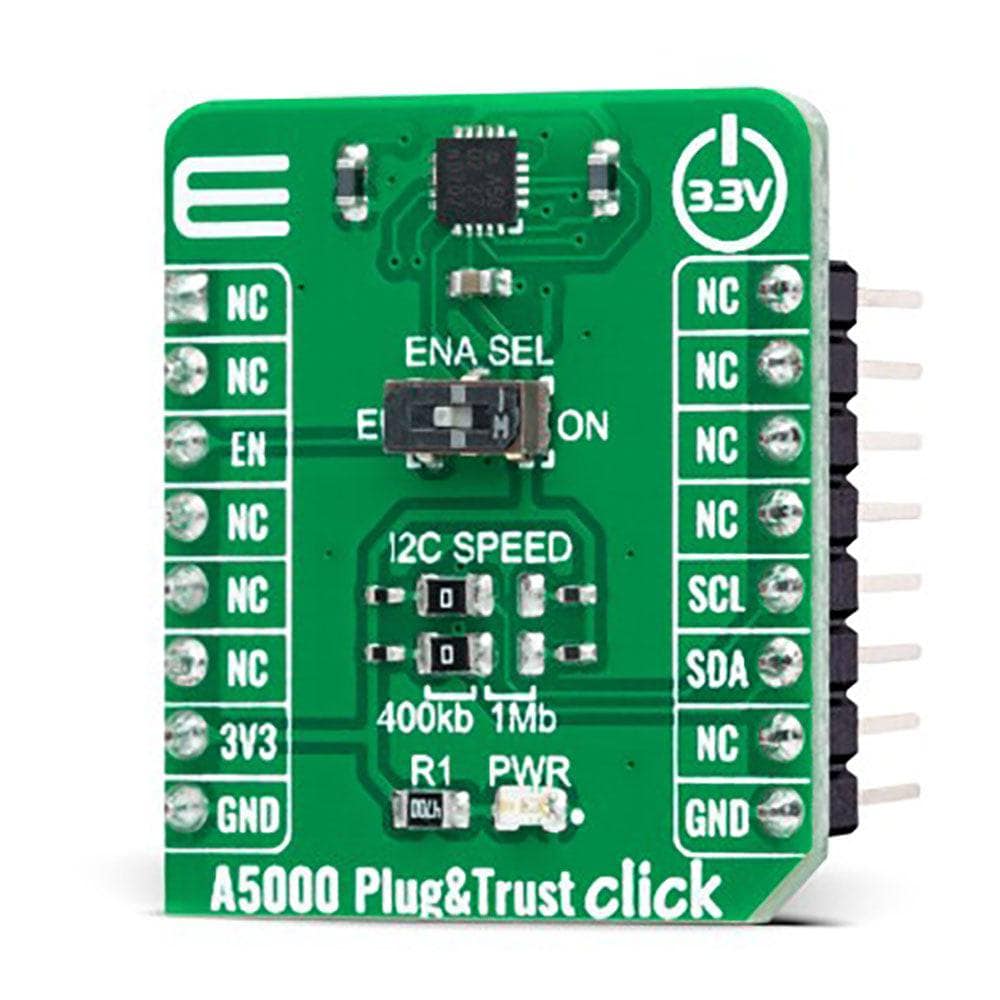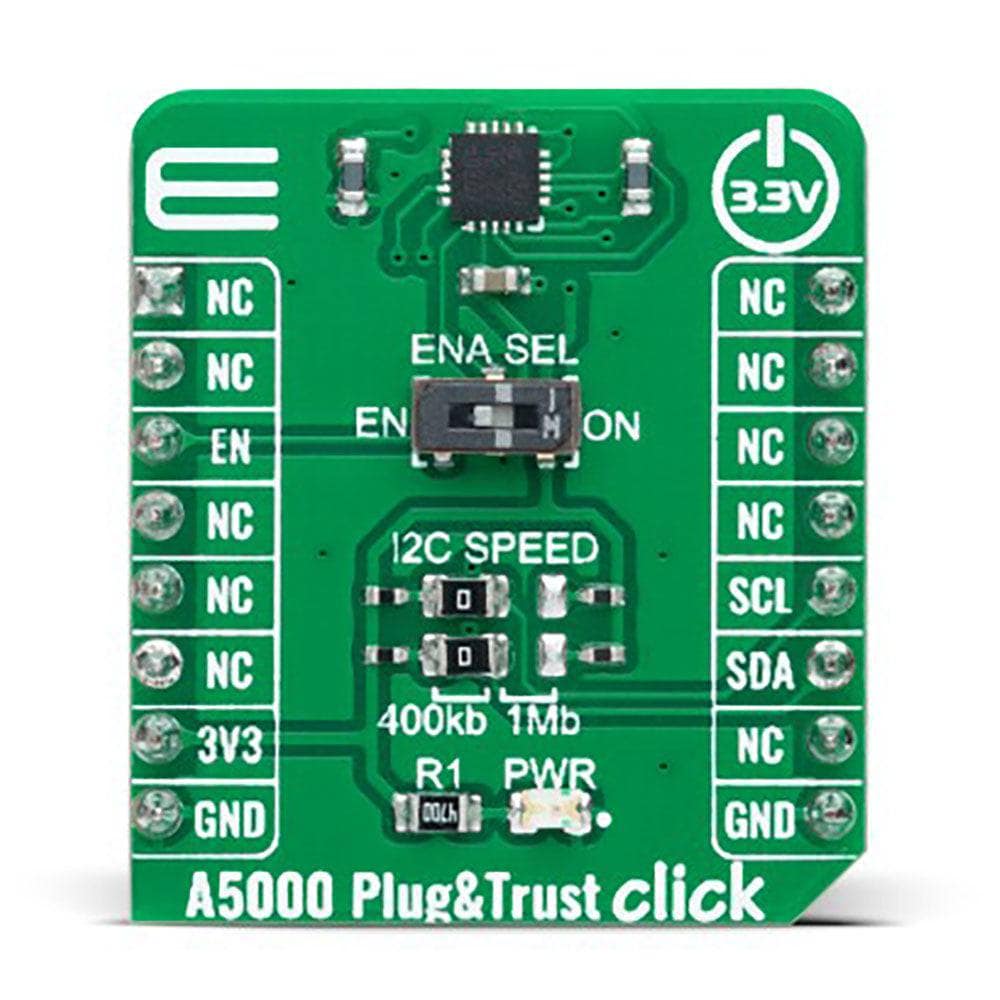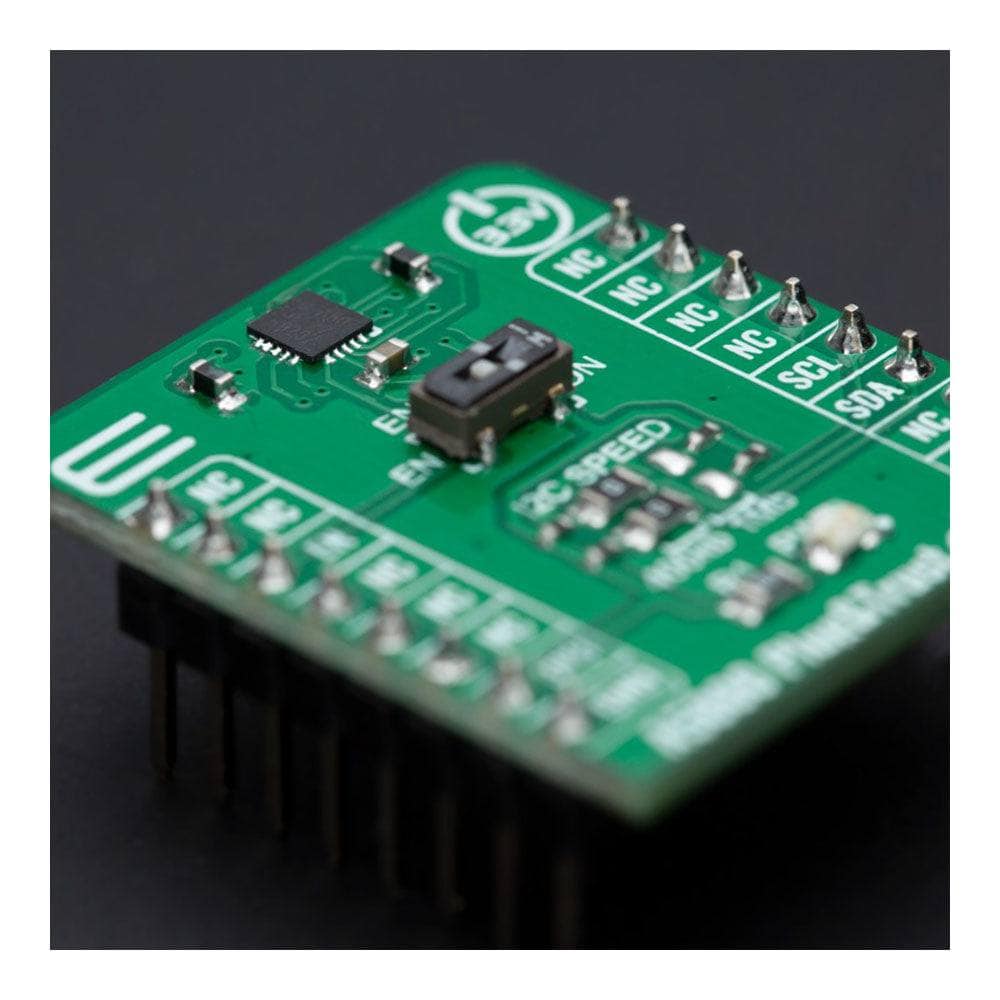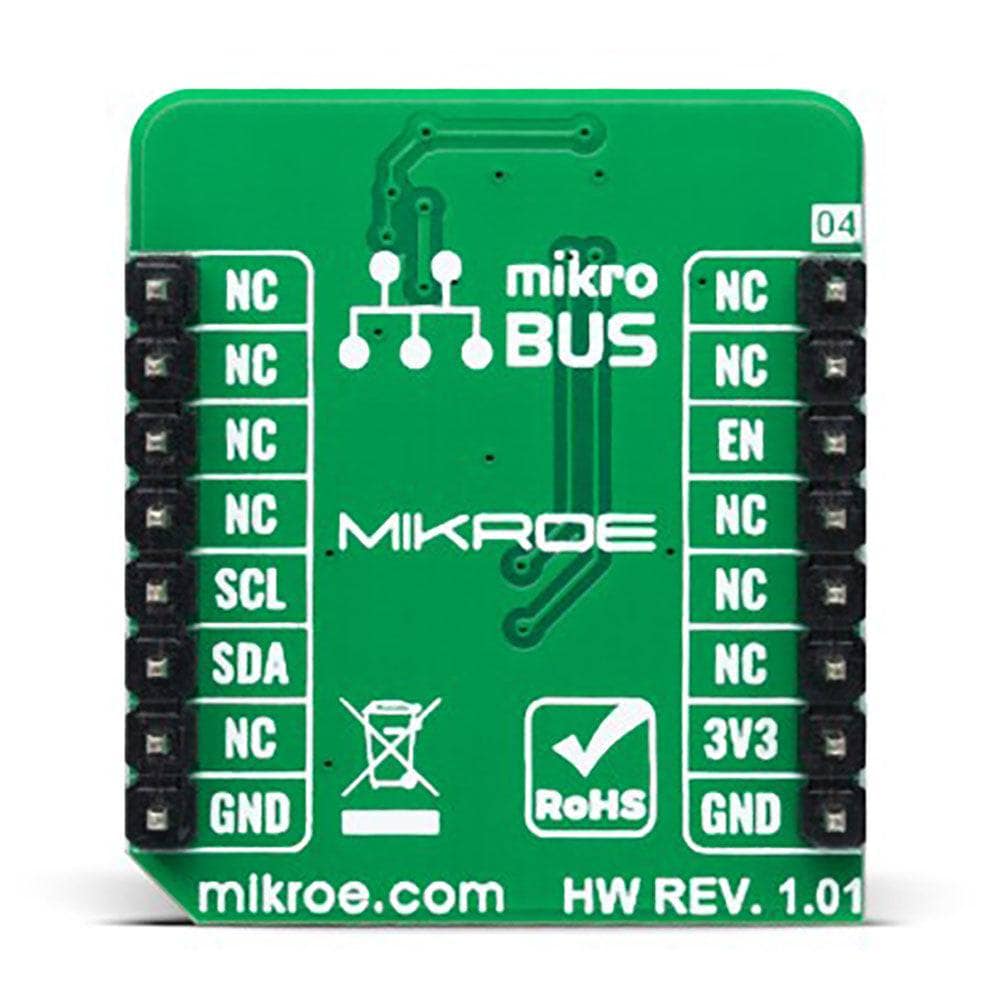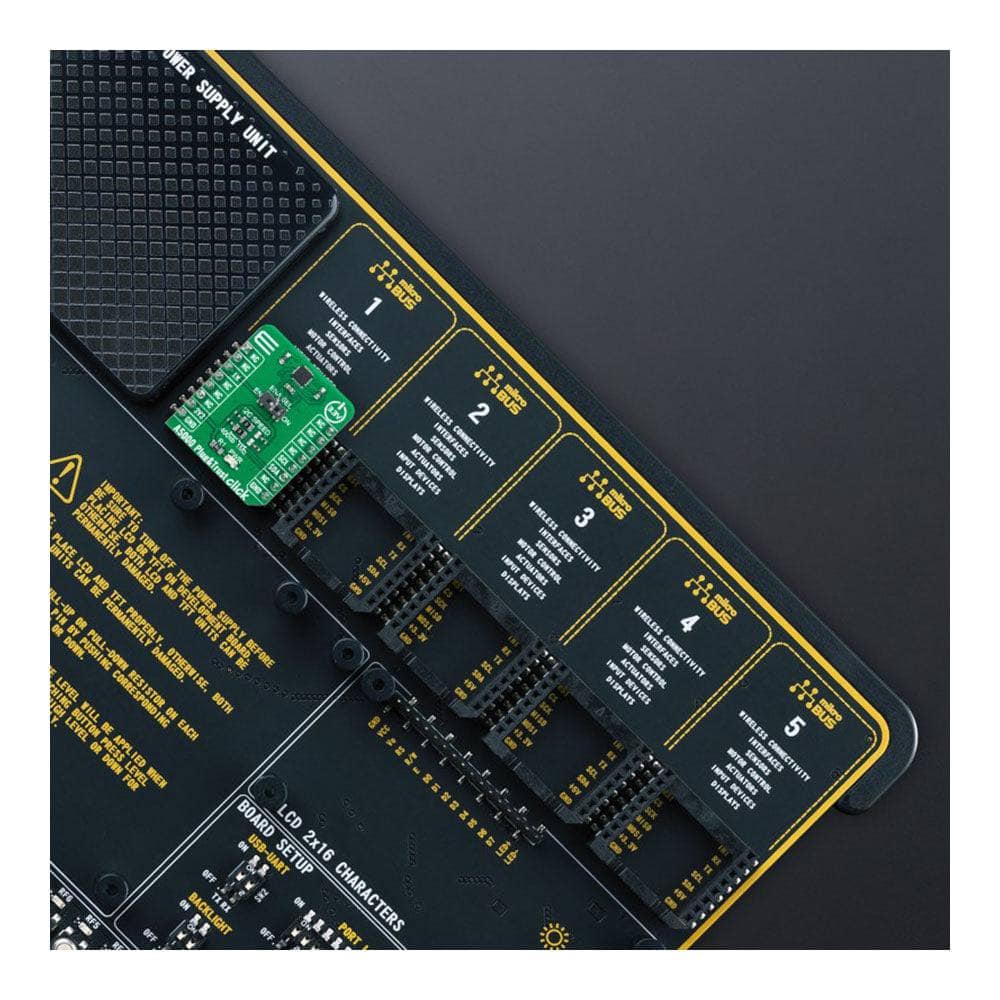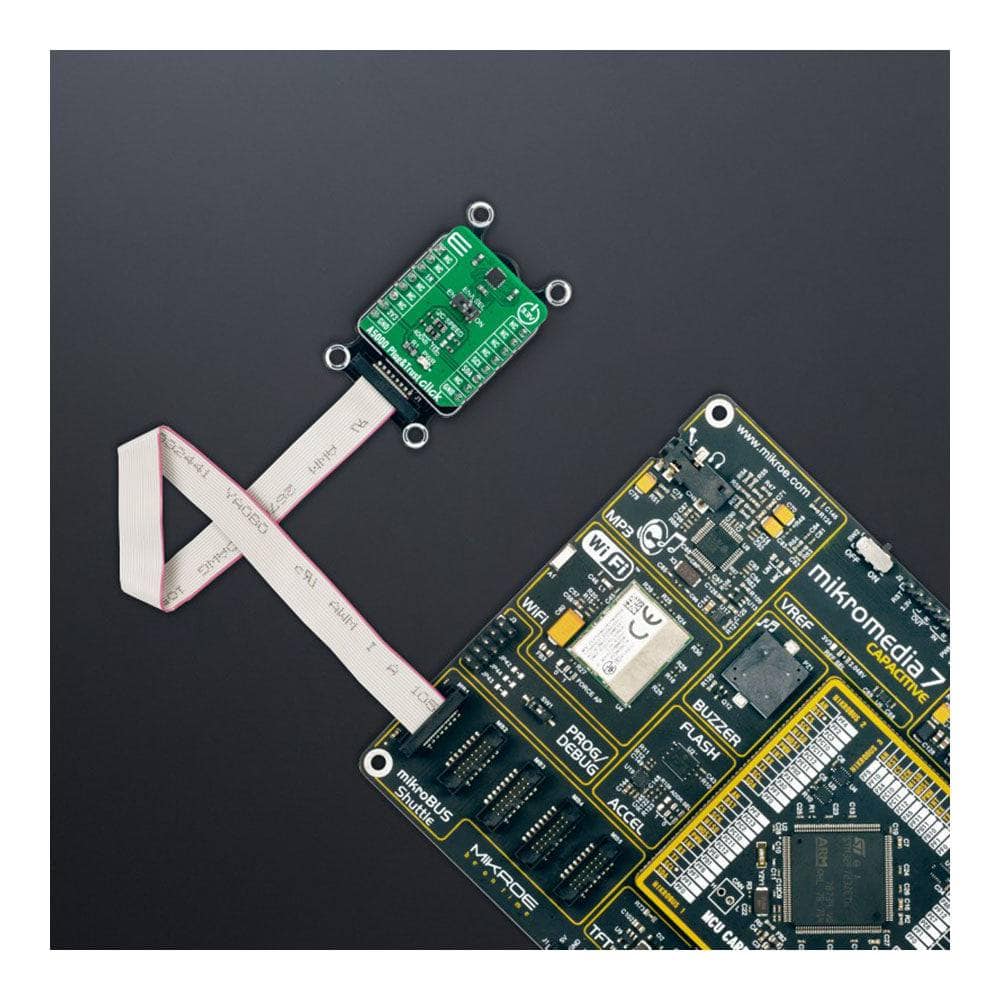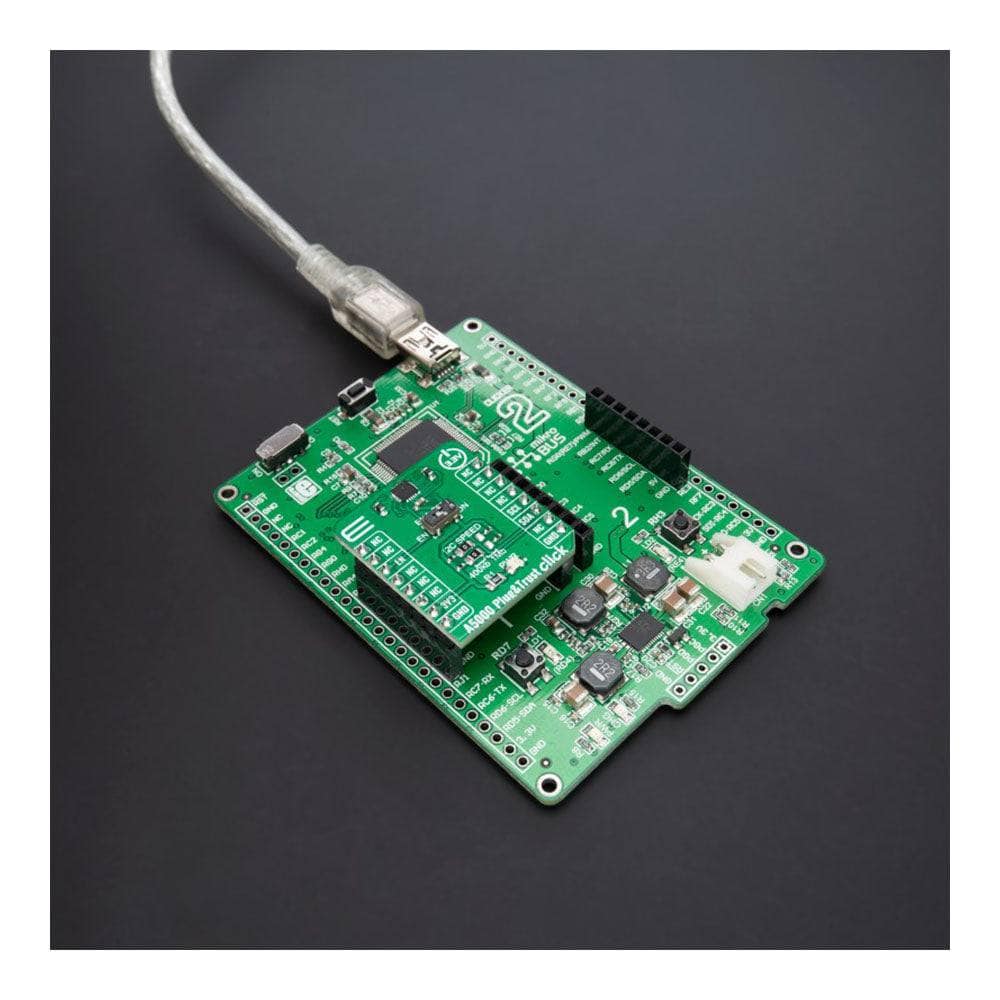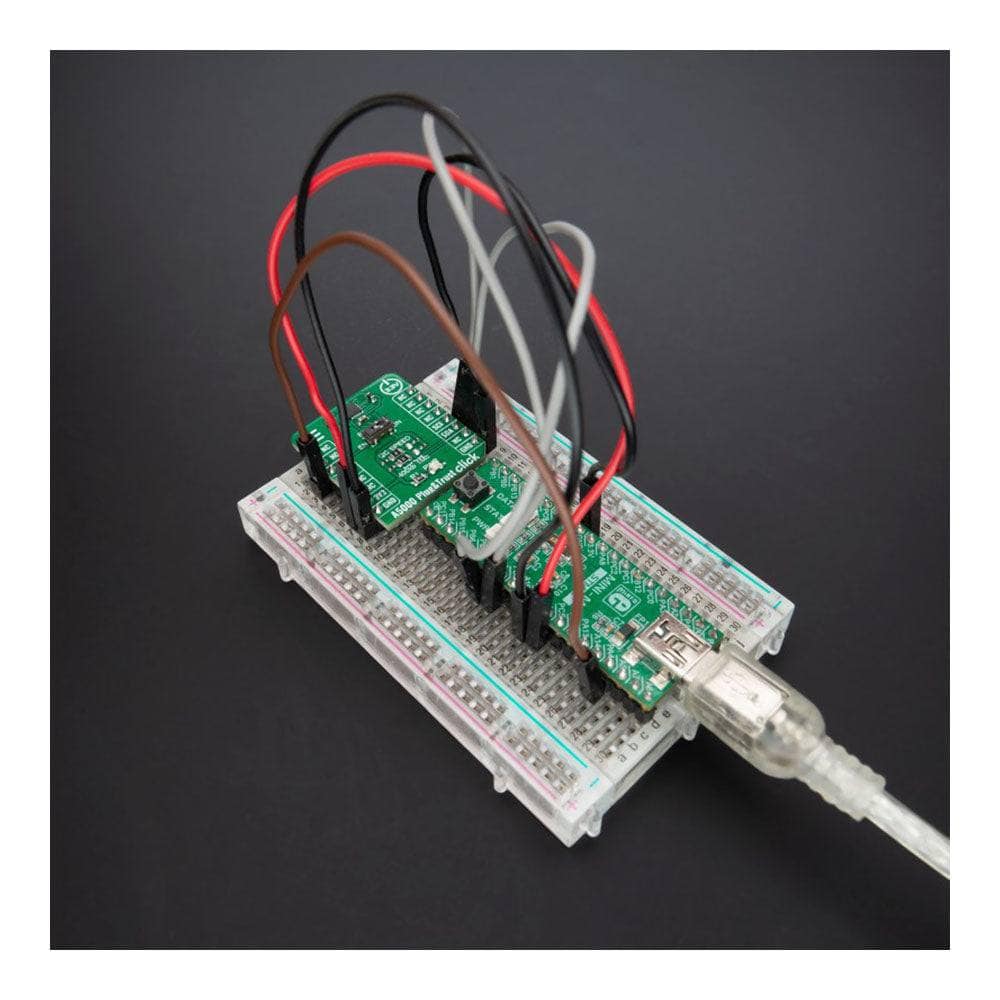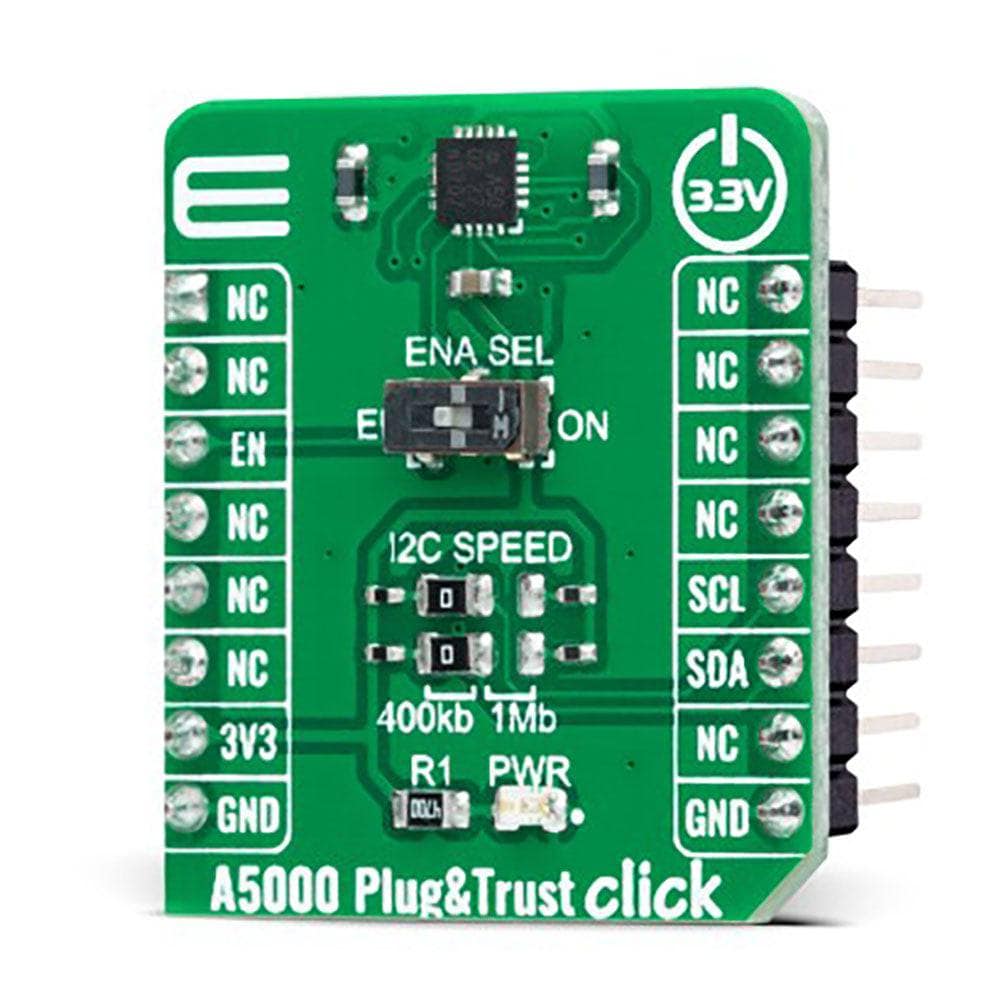
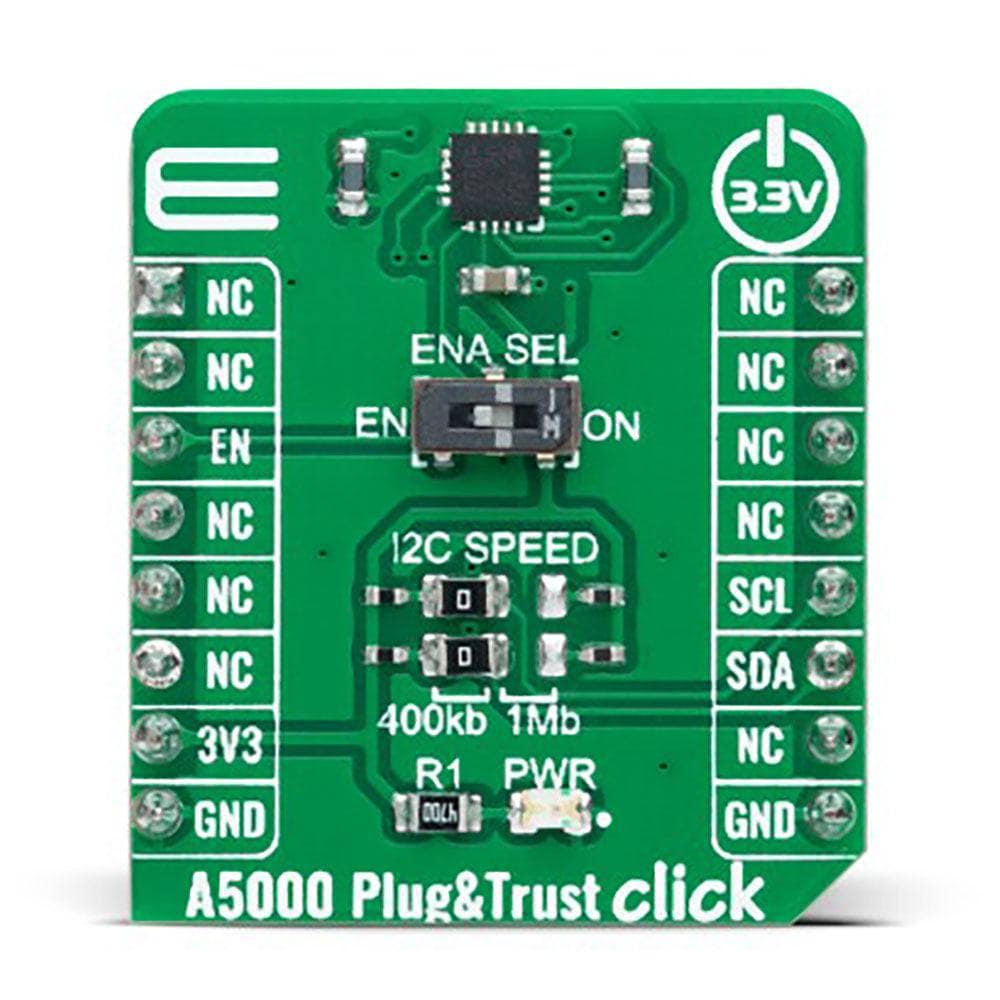
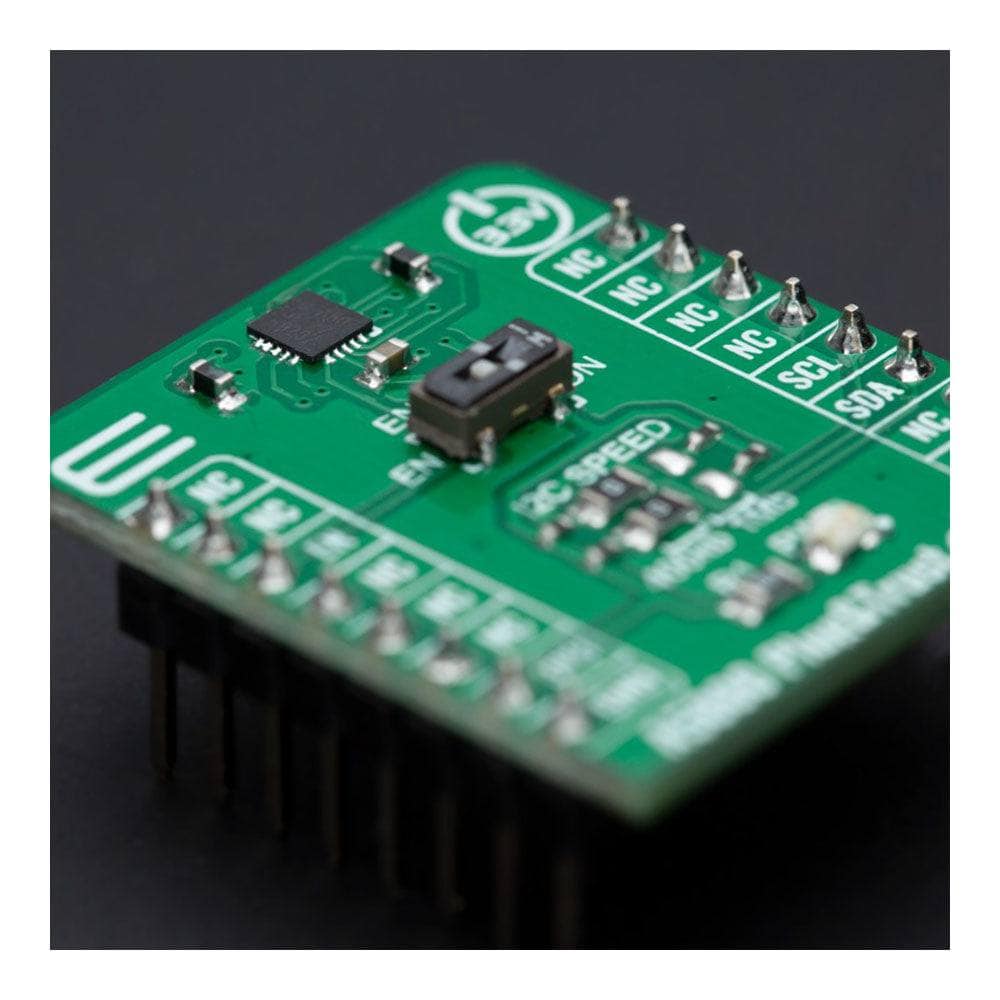
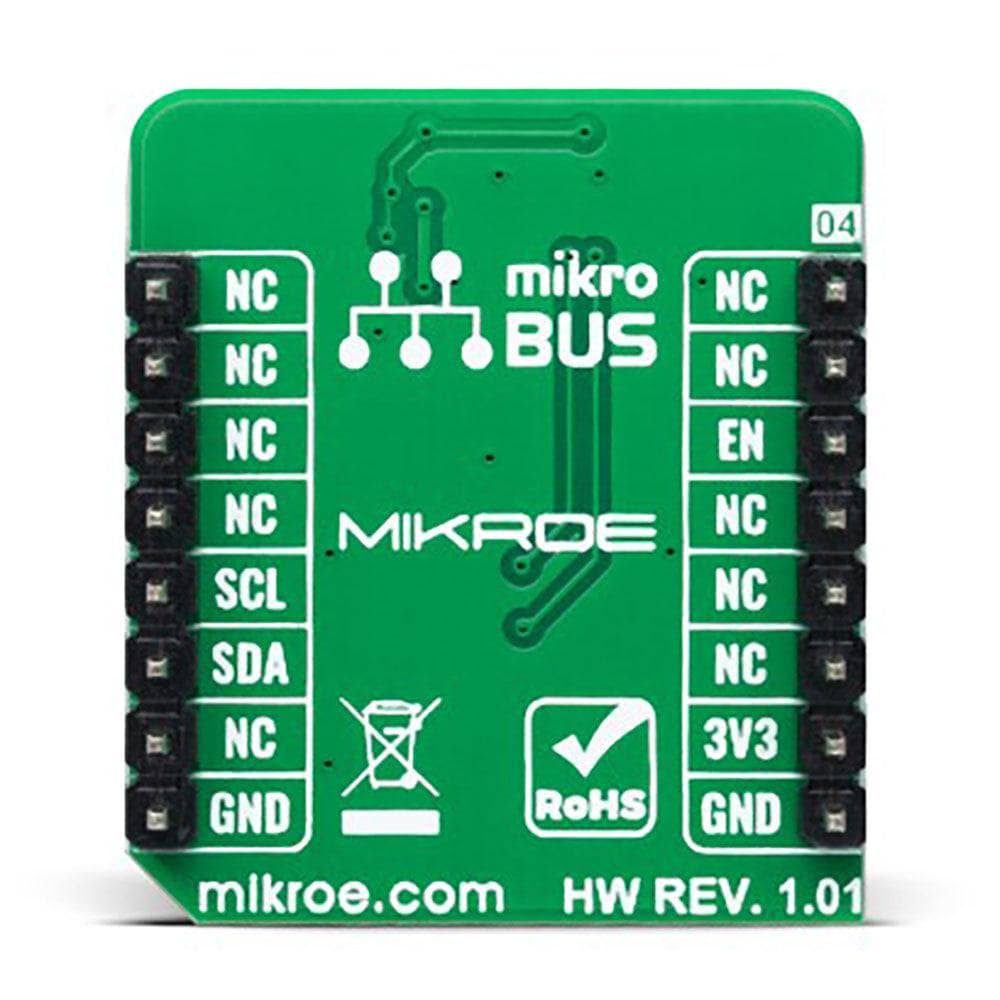
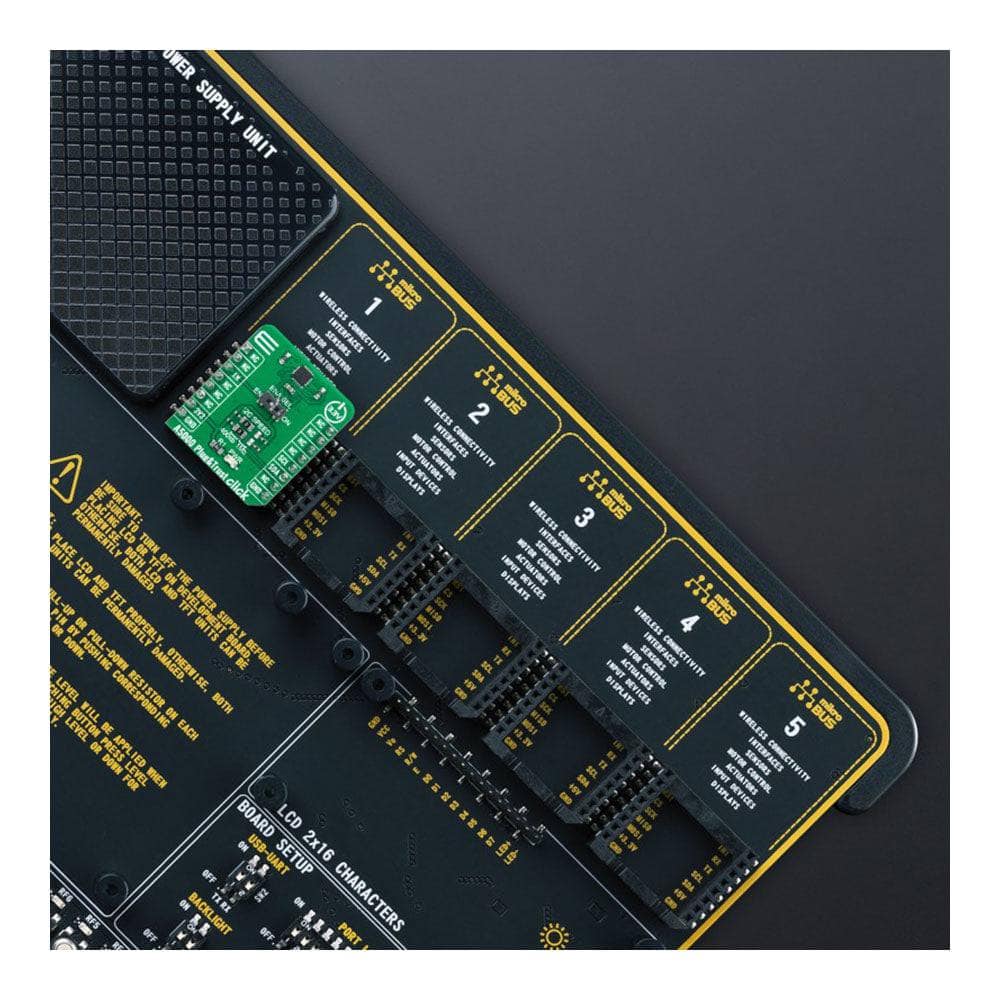
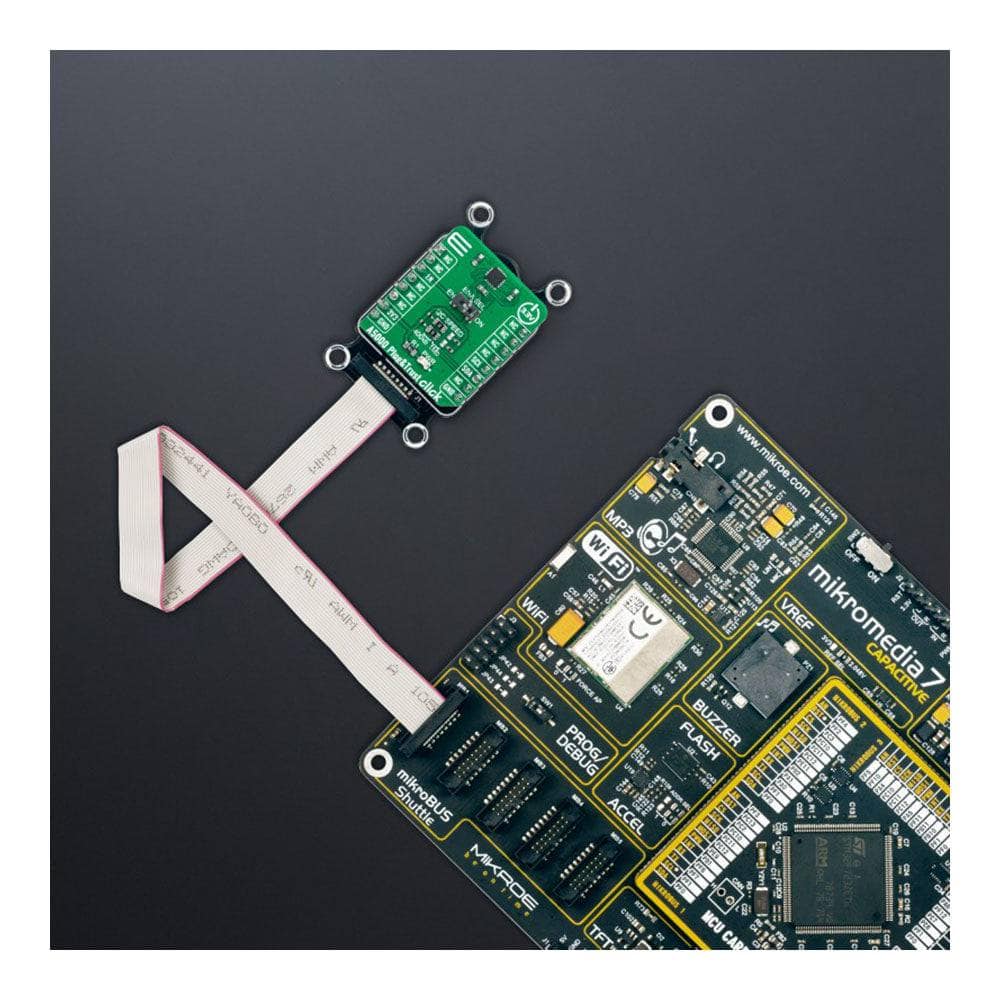
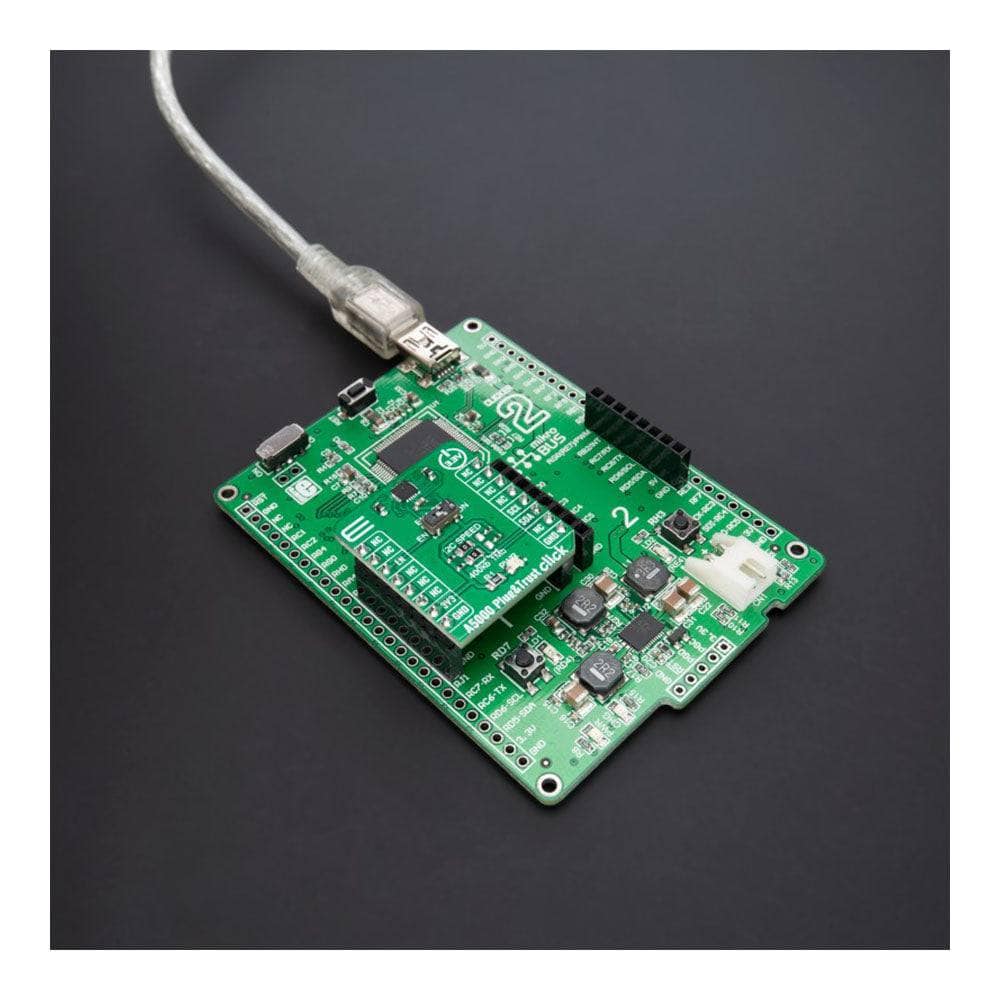
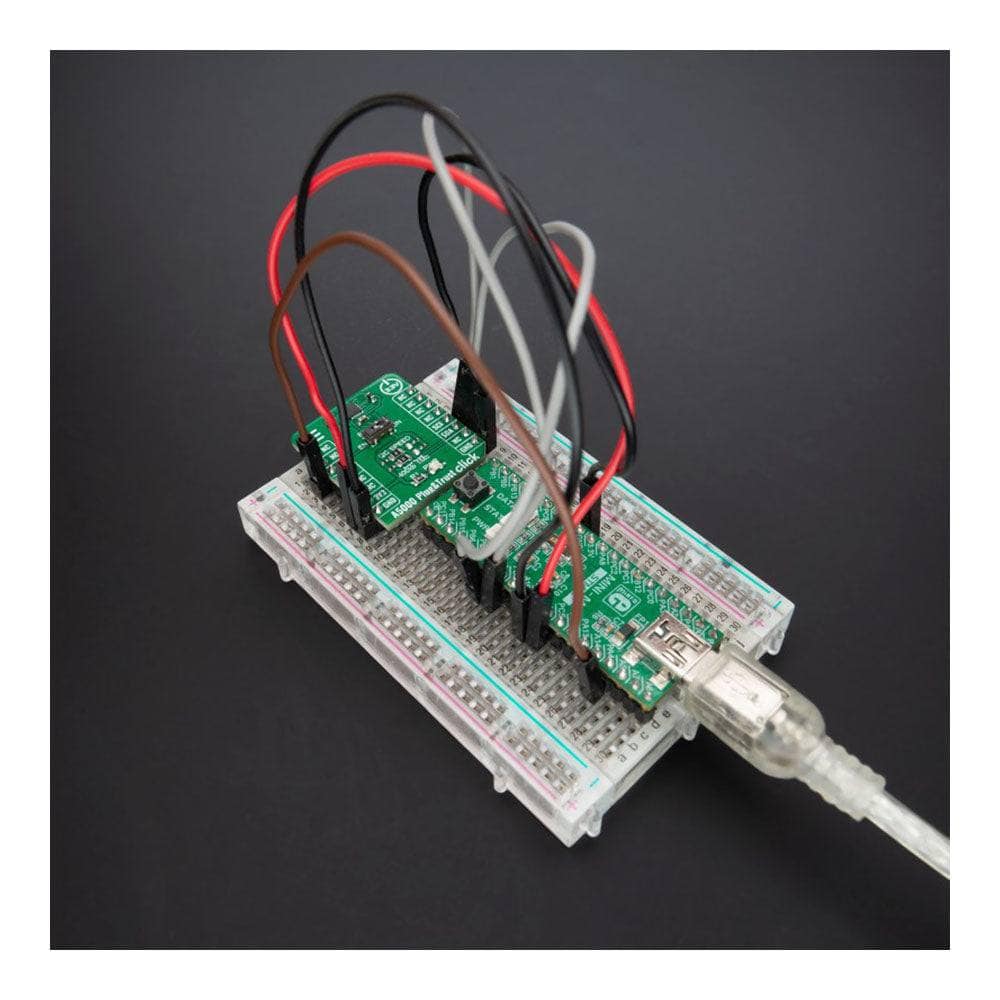
Key Features
Overview
The A5000 Plug&Trust Click Board™ is a compact add-on board representing a ready-to-use secure IoT authenticator. This board features the A5000, an Edge Lock® Secure Authenticator from NXP Semiconductors. The A5000 provides a root of trust at the IC level, giving an IoT authentication system state-of-the-art security capability. It allows for securely storing and provisioning credentials and performing cryptographic operations for security-critical communication and authentication functions. It has an independent Common Criteria EAL 6+ security certification up to OS level and supports ECC asymmetric cryptographic and AES/3DES symmetric algorithms. This Click board™ is suitable in IoT security use cases such as secure connection to public/private clouds, device-to-device authentication, or counterfeit protection.
The A5000 Plug&Trust Click Board™ is supported by a mikroSDK-compliant library, which includes functions that simplify software development. This Click board™ is supplied as a thoroughly tested product, ready to be used on a system equipped with the mikroBUS™ socket.
Downloads
La carte Click Board™ Plug&Trust A5000 est une carte complémentaire compacte représentant un authentificateur IoT sécurisé prêt à l'emploi. Cette carte comprend l'A5000, un authentificateur sécurisé Edge Lock® de NXP Semiconductors. L'A5000 fournit une racine de confiance au niveau du circuit intégré, offrant à un système d'authentification IoT une capacité de sécurité de pointe. Il permet de stocker et de provisionner en toute sécurité les informations d'identification et d'effectuer des opérations cryptographiques pour les fonctions de communication et d'authentification critiques pour la sécurité. Il dispose d'une certification de sécurité indépendante Common Criteria EAL 6+ jusqu'au niveau du système d'exploitation et prend en charge les algorithmes cryptographiques asymétriques ECC et symétriques AES/3DES. Cette carte Click board™ convient aux cas d'utilisation de sécurité IoT tels que la connexion sécurisée aux clouds publics/privés, l'authentification d'appareil à appareil ou la protection contre la contrefaçon.
La carte Click Board™ A5000 Plug&Trust est prise en charge par une bibliothèque compatible mikroSDK, qui comprend des fonctions qui simplifient le développement logiciel. Cette carte Click Board™ est fournie sous la forme d'un produit entièrement testé, prêt à être utilisé sur un système équipé du socket mikroBUS™.
| General Information | |
|---|---|
Part Number (SKU) |
MIKROE-5391
|
Manufacturer |
|
| Physical and Mechanical | |
Weight |
0.02 kg
|
| Other | |
Country of Origin |
|
HS Code Customs Tariff code
|
|
EAN |
8606027387098
|
Warranty |
|
Frequently Asked Questions
Have a Question?
Be the first to ask a question about this.

